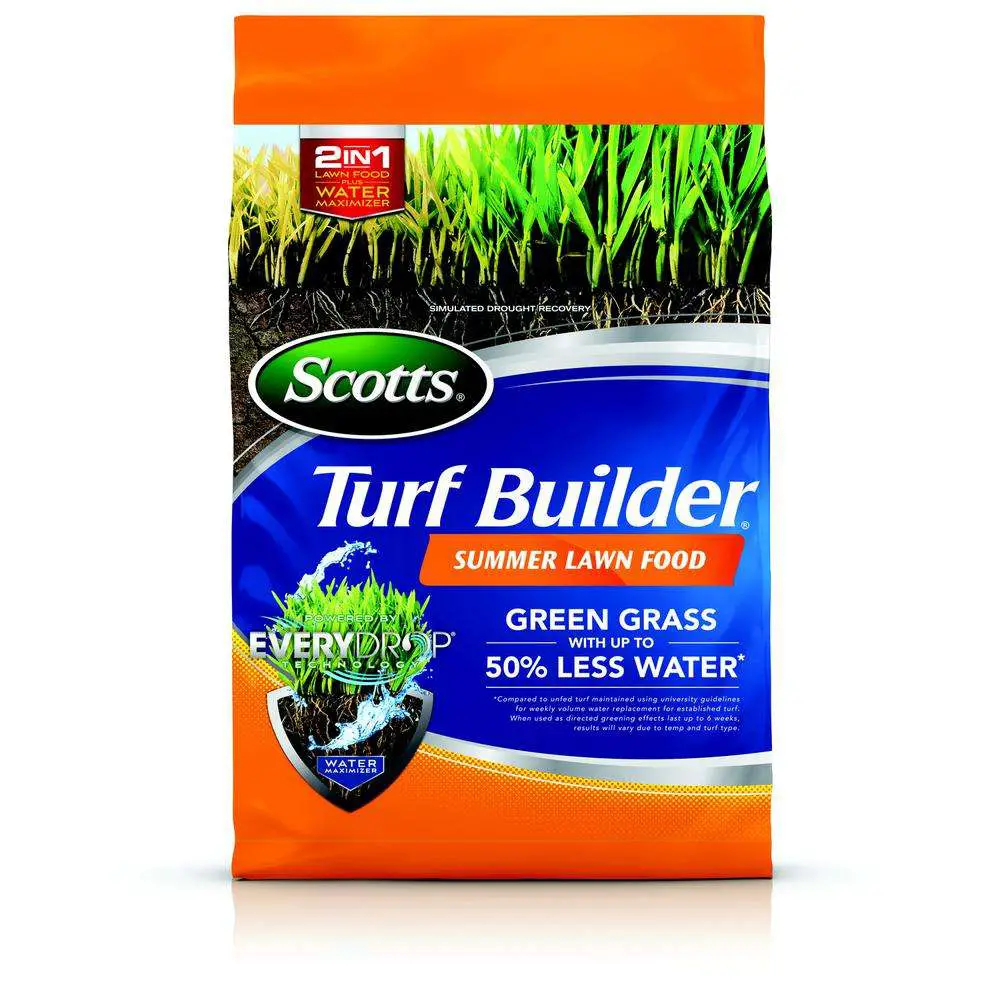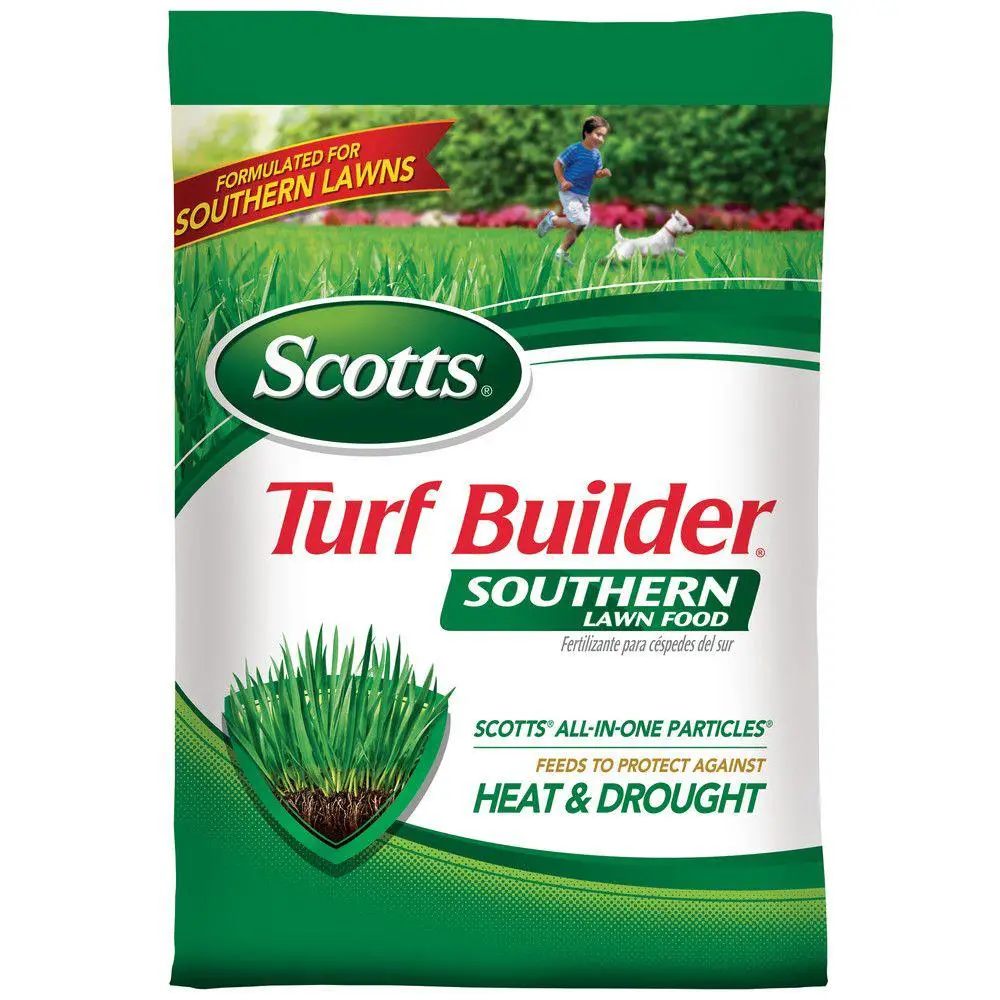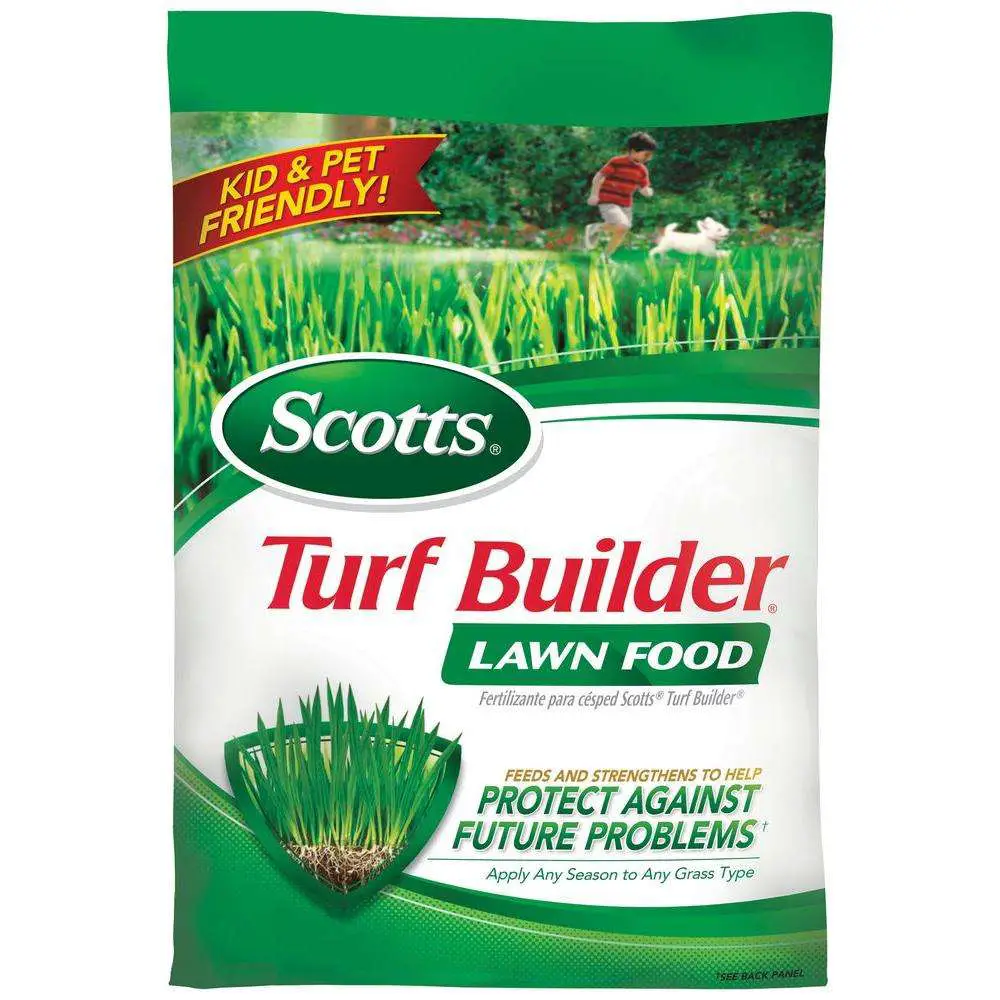In The Spring What Is The Finest Lawn Fertilizer
Its better for your lawn in the spring to use a longer-lasting fertilizer, as it takes less application time. Make sure to keep in mind that there are both fast-release and slow-release forms of nitrogen. Just check the guaranteed analysis on the packaging to see what the fertilizer is made of. A few key terms to keep an eye out for are water-insoluble nitrogen, controlled release, gradual release, and other variations of those terms. These include IBDU, ureaform, sulfur-coated, and polymer-coated urea, as well as ureaform . Organic nitrogen sources with controlled release rates are available for those who prefer a more natural approach. Lawn fertilizers with a good balance of short and long-term nitrogen sources are available from a wide range of manufacturers.
Unit Costs: How Pros Price
Unlike other websites that publish pricing from unrelated jobs in the past, Homewyse creates up-to-date estimates from current Unit Costs. The Unit Cost method delivers high accuracy by using location, details and options for the unique requirements of each job. Contracting, trade, design and maintenance businesses rely on the Unit Cost method for transparency, accuracy and fair profits.
When Should I Apply Lawn Fertilizer
Applying lawn fertilizer in the spring, between February and April, is recommended by most lawn care firms. This is the time of year when your lawn will begin to aggressively develop and turn green. Your grass should be ready for its first cut of the season when it appears like its ready for fertilizer.
While most people are aware of the need of spring fertilization, fall feeding should not be overlooked. If you dont fertilize your lawn in the fall, your grass will die. This is the most critical time of year to apply fertilizer since it will keep your lawn healthy during the winter months. Its best to apply a fertilizer with somewhat higher phosphorus and potash concentrations in the fall since it encourages stronger root growth. Fertilize extensively in the fall and sparingly in the early spring to keep your grass in tip-top shape.
Read Also: How Much Should Lawn Mowing Cost
Does Beer Really Help Your Lawn
Scientifically, that would be a big not really. A typical beer contains six to 15 carbohydrate grams per 12-oz. can. These carbs are a food source for microbes that improve soil health and help it convert nitrogen to a form grass roots can consume.
However, youre not applying enough beer to your lawn to make a difference. And no research has determined how many ounces per 1,000 square feet would meet a threshold of significance.
Recap: Lawn Fertilizer Dos And Don’ts

- Use test results to choose the right fertilizer.
- Spend time accurately measuring the size of your lawn.
- Try an organic during the hot summer months.
- Buy a quality spreader that best fits your needs.
- Accurately calibrate your spreader to make sure you apply the right amount.
- Keep your spreader well maintained.
- Keep records of what and how much you apply and when you apply it.
Dont:
- Test your soil after you have fertilized.
- Guess on how much fertilizer you need and what setting you use.
- Apply fertilizer in hot, humid weather.
- Apply fertilizer near water features, on hard surfaces or on frozen ground.
- Use phosphorus unless your soil test indicates a deficiency.
- Apply more than four times a year.
- Use liquid fertilizers on your lawn.
- Use a drop spreader in big lawns.
- Bag your clippings.
Don’t Miss: What Kind Of Lawn Weed Is This
Is It Possible To Use Too Much Fertilizer On My Lawn
When it comes to fertilizing your lawn, the concept of too much of a good thing absolutely apply! Too much fertilizer on your lawn will cause the nitrogen and salt levels in the soil to rapidly rise, causing the grass to suffer harm or even die. This is referred to as fertilizer burn, and it appears as yellow and brown stripes or areas of dead grass. These symptoms might develop as soon as a day following fertilizer application, making the source straightforward to pinpoint.
How To Use Fertilizer In Your Garden
How to Use Fertilizer in Your Garden
Sprinkle, spray, dig in to the soil youve probably caught on that theres more than one way to feed your plants.When moisture is added it breaks the particles down so the plant can absorb the nutrients.So whether your plant needs granulated fertilizer, water-soluble fertlizer or compost, each type of feeding has options when it comes to how its applied.Some kinds release quickly if your plants need a fast fix others are slow-release for a gentle, long-term feeding.A granulated fertilizer always needs moisture to break it down before plants can use the nutrients.In flower beds and borders, broadcast granulated fertilizer by hand and then scratch it into the soil.Liquid or water-soluble fertilizer can be diluted to adjust the strength as you mix it.Both give a gentle, steady feeding that wont burn your plants.Its hard to produce enough to do a large garden so you may need to purchase larger quantities. .
Don’t Miss: How To Remove Fungus From Your Lawn
How Can Fertilizer Affect Aquatic Ecosystems
When manure or commercial fertilizers enter surface water, the nutrients they release stimulate microorganism growth. The growth and reproduction of microorganisms reduce the dissolved oxygen content of the water body. Without sufficient dissolved oxygen in surface water, fish and other aquatic species suffocate.
How To Make Liquid Fertilizer For Plants
To make it, I put one cup of processed poultry manure or blended organic fertilizer into a pail along with a few handfuls or grass clippings or chopped comfrey or stinging nettle leaves. Then I fill the pail with a gallon or so of water, stir well, and place it in the shade covered with an old towel.
Recommended Reading: Is Lawn Service Taxable In Texas
Apply Grass Fertilizer Correctly
Now you’re ready to apply. Feeding the lawn is as simple as mowing it, and as easy as walking at your normal steady pace. Just follow these guidelines for easy application and even coverage.
If youre using a broadcast spreader, feed the entire perimeter of your lawn first. Engage the side-shield, which blocks off one side of the spreader to keep the product on the lawn and out of gardening beds and off driveways and sidewalks. Next, fill in the middle by turning off the side-shield feature and walking back and forth in straight lines. To get even coverage, overlap slightly on each pass by moving over 2 steps before you begin the pass.
When using a drop spreader, start by applying 2 header strips at opposite ends of the lawn to create a turning area. Next, fill in the rest of the lawn by applying the fertilizer back and forth in straight lines perpendicular to your header strips. To ensure you get even coverage, be sure to overlap the wheel tracks by about half a foot .
After youve finished feeding your lawn, return any unused product to the bag and store it for future use.
How Much Fertilizer Does My Lawn Need
For years, homeowners fertilized their lawns in the spring when temperatures rose, and sunshine dominated, then again, perhaps, in summer and once more in the fall. Most lawns, those without the benefit of automatic irrigation systems, performed reasonably well, developed moderate density and color and most folks were satisfied.
With the explosion of the game of golf in the US, more and more golfers noticed the obvious difference between their lawns and the carpet-like golf turf they played on and wanted the same turf quality at home!
More than any other factor, this interest in fine turf led to an expansion in turf research at universities nationwide and new recommendations for building beautiful lawns.
Two primary factors were identified as being the keys to developing thick, healthy turf: first, water. Grass plants are 90% water. They require 1.0 to 1.5 inches of water every week in lieu of rainfall. When that water is absent, nothing will take its place as integral in optimum turf growth.
The second important factor identified in turf development was fertilizer. Not just any fertilizer, like manure. Researchers learned that complete fertilizer was required. The definition of a complete fertilizer is one that contains all three major turf nutrients, Nitrogen, Phosphorus, and Potassium. So, spreading old fashioned, organic fertilizers did not produce the same quality turf as newer, plant-focused products.
Don’t Miss: How Do I Kill The Clover In My Lawn
Find Out What Type Of Grass You Have
Learning how much nitrogen your lawn requires means identifying what type of grass you have. This may be a process of elimination so start with which climate you are in then try to single out your grass.
Cool-season grasses are for typically colder, more arid climates such as the Midwest, Northeast, and Pacific Northwest. These conditions favor grass types such as Bentgrass, Southern Bluegrass, Fescues, and Ryegrass.
Warm-season grasses thrive in warmer climates in the Southern states. The grasses typically include Zoysia Grass, Bermuda Grass, Centipede Grass, Dichondra, and St. Augustine Grass.
A straightforward method of finding out what type of grass you have is to look at the youngest leaves.
Their arrangement from the center of the shoot is called their vernation and should either be folded or rolled in the bud. This will further narrow your search as certain types of grass, like Bluegrass, are rolled while others, such as Ryegrass, are folded in the bud.
Once you have established the vernation, try to find out how the grass grows. Specifically, if it grows out creeping apart or bunched together. Grasses such as Centipede Grass creep out while Fescue bunches together.
Even after identifying the characteristics of your grass, you can still be in some doubt as to what specific type it is.
Numerous sites will have photos where you can cross-examine samples alongside photos from your own lawn yet even that can be bewildering.
Mulch Your Grass Clippings

If youre tired of bagging grass while you mow, weve got good news. To help your lawn stay greener year-round, you can leave the grass clippings on your lawn. When grass clippings break down, they provide your lawn with beneficial nutrients. While you dont need to buy a new mower blade, it doesnt hurt to install a mulching blade so that the grass is cut into smaller pieces. Learn more about recycling grass clippings here.
You May Like: What Are The Numbers On Lawn Fertilizer
How Often Should You Fertilize Trees And Shrubs
Fertilizing twice a year is preferable to the common practice of fertilizing every two to three years. The best time to fertilize is fall, generally after the first hard freeze in September or October. The next best time would be before growth begins in early spring, usually between March and early May.
Soil And Water Testing
In lawn care process, because of carelessness, people usually lack of soil and water testing steps.
Poor soil and water quality will also cause grass growth. For example, if your soil is contaminated with acidic alum, you need to use substances to reduce the amount of acidic alum.
Another good example is nutrient-poor soils, which you need to provide more nitrogen, phosphorus, and other essential nutrients. Therefore, soil and water conditions also directly affect the application of fertilizers.
Recommended Reading: Where To Buy Ariens Lawn Mower
How To Calculate N
Most people are familiar with the chemical elements, but may not be as familiar with the nutrients in plants. For example, phosphorus is found in the phosphate group of minerals, while potassium is found in various fruits and vegetables. These two nutrients are essential to plant growth, so its important to know how much of each to give plants.
To calculate how much of a nutrient a plant needs, you need to know its N-P-K rating. The N-P-K rating tells you how much nitrogen, phosphorus, and potassium are present in the fertilizer.
To find out a fertilizers N-P-K rating, you first need to determine its percentage composition. This can be done by reading the label or contacting the manufacturer. You should also know the NPK formula, which is:
NPK = N x P x KN = Nitrogen
The Roles Of N P And K
Nitrogen greens up your lawn and helps it grow. Phosphorus stimulates root growth and helps seeds sprout. Potassium helps grass withstand stresses like disease and drought. Thatâs why Scotts® Turf Builder® Starter® Food for New Grass contains phosphorus: It helps small seedlings establish a good root system. Once these roots are developed, though, they can access the phosphorus found naturally in most soils, which is why you wont find it added to Scotts® Turf Builder® products that arent for new grass.
Don’t Miss: How To Combat Weeds In Your Lawn
Determine How Much Nitrogen Is In The Fertilizer
After determining the lawn area, you should ascertain the Nitrogen composition in your fertilizer and the amount needed for every 1000 sq. feet.
This step should not be difficult because you can quickly point out the percentage composition of Nitrogen in a given bag by checking the Nitrogen, Phosphorus, and Potassium formulation formulation on the bag containing the fertilizer.
Note that most lawn fertilizers have a high composition of Nitrogen. A label reading as 20-5-10 has 20 percent N, so 100 lb. of that fertilizer contains 20 lb. of N.
Best Time To Fertilize Your Lawn
Spring means more daylight and warmer temperatures. After a cold winter, this is the weather your grass is craving. If youre unsure of exactly when to lay down your first feeding, you can base it off of the temperature. Ideally, the ground should be around 55 degrees Fahrenheit. Depending on where you live, March to April is the best time to fertilize your lawn. Its also best if your yard is watered a few days before you want to apply the fertilizer, whether thats from rain or a sprinkler.
Fertilizer provides your grass with extra nutrients that help to prevent crabgrass and allow it to grow green and thick. To ensure youre laying the feed correctly, start around the perimeter of your lawn. Then, you can start filling in the middle. Similar to mowing your yard, you should go back and forth in straight lines. And you should always use a lawn spreader instead of your hands to complete the job.
Now that you know that spring is the best time to fertilize your lawn, here are some other helpful tips that will keep your grass thriving.
Recommended Reading: How Much Water Does Your Lawn Need
What Month Should I Fertilize My Lawn
Most lawn care companies recommend that you apply lawn fertilizer in the spring, between February and April. This is when your grass will start to green up as it begins to actively grow. Basically, if it looks like your grass is ready for its first mowing of the season, then it should also be ready for lawn fertilizer.
While most people know to fertilize their lawns in the spring, it is important to remember that fall feeding is critical, too. In the fall, grass roots are going down into the soil and need fertilizer to stay healthy. This is the most important application of fertilizer for the whole year since it will protect your lawn as it goes dormant over winter. However, if the fall you should use a specific fall fertilizer that is slightly higher in phosphorous and potassium, as it will promote better root growth. To ensure optimal lawn health, fertilize heavily in the fall and lightly in early spring.
What Can I Do If I Apply Too Much Fertilizer

The numbers can be quite exacting so it is best practice to double-check your calculations. Use a machine that you can know can measure and distribute fertilizer exactly how you want it on your lawn.
Should the worst happen, and too much fertilizer hits a certain spot then try to scoop it up. If that is not possible then try to flush it out with water which can help to prevent a burn.
Don’t Miss: When To Fertilize Lawn In Maine
What Lawn Fertilizer Is Best For Early Spring
In the spring, a longer-lasting fertilizer is usually better for your grass because it requires fewer applications. The most critical nutrient is nitrogen, however, there are fast-release and controlled-release nitrogen sources to consider. Simply check the guaranteed analysis area on the back of the package to see what the fertilizer includes. Controlled-release, slow-release, slowly-available, or water-insoluble nitrogen are all terms to look for. Ureaform, sulfur-coated urea, polymer-coated urea, and IBDU are some examples of specific varieties that may be listed . If you choose a more natural, less artificial option, several organic nitrogen sources offer controlled release. Most high-quality lawn fertilizers combine fast and controlled release sources to create a fertilizer that provides both immediate color and long-term nitrogen.
How Soon You Can Fertilize After Seeding Your Lawn
Its not always after seeding that you should apply fertilizerthe best time to fertilize is right before or during the seeding process. Use a starter fertilizer with quick-release nitrogen since that will give the seeds a nutritional boost. When you make fertilizer a part of the seeding process, your grass will grow quicker and is more likely to end up healthy and lush.
Don’t Miss: How Much Lawn Mower Cost
How Long Does It Take For Fertilizer To Turn Grass Green
Just like over-applying fertilizer will yield negative results quickly, you will also know right away if you have done a good job fertilizing your lawn. If youve fertilized properly, you should start to see results anywhere from 1 to 5 days afterward, depending upon the type of fertilizer you used.